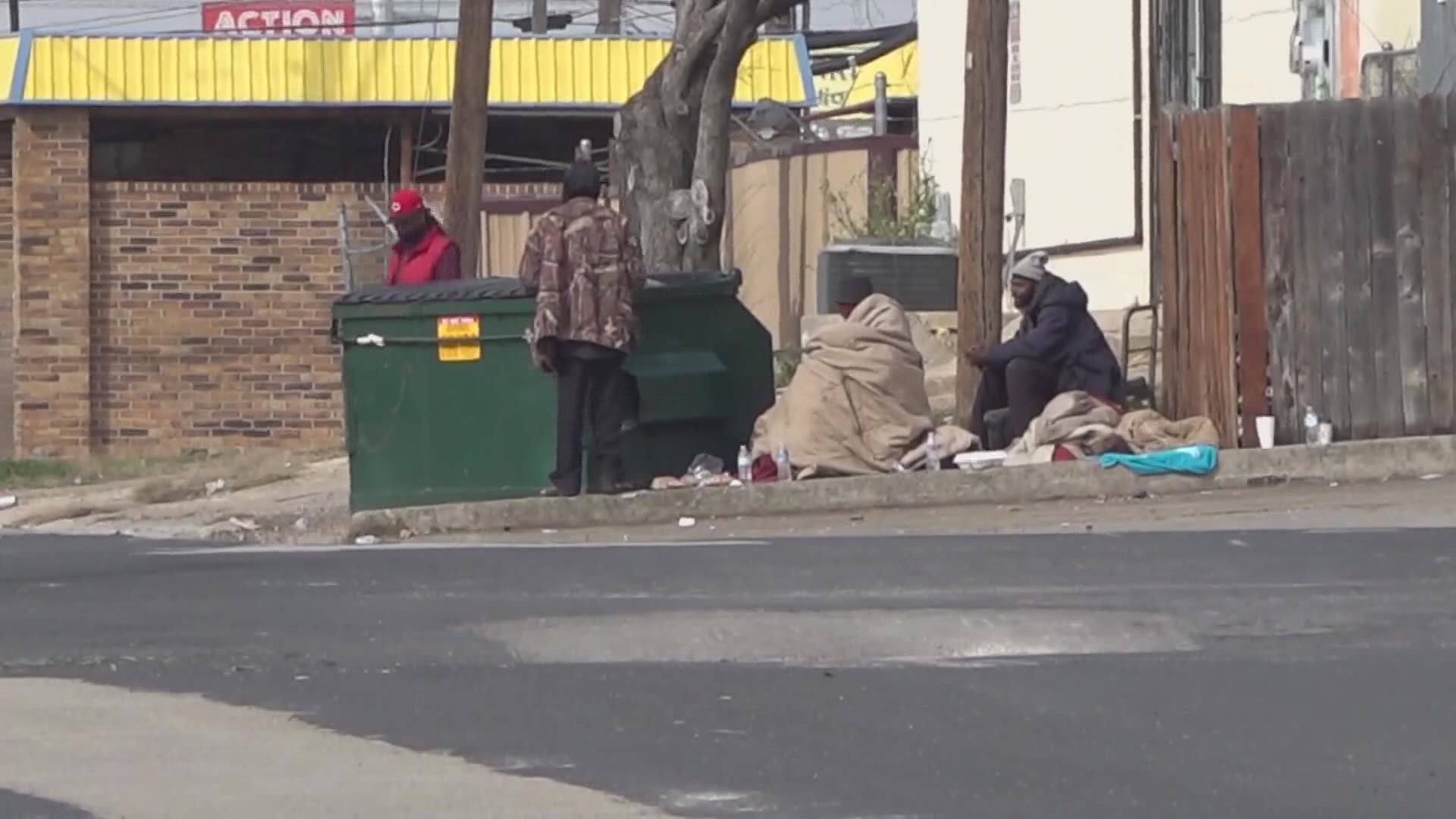BELL COUNTY, Texas — A new report shows roughly 57 percent of homeless individuals in Bell County do not have direct ties to the area. Consultant Dr. Robert Marbut Jr. says most of these individuals are either traveling down I-35 or coming off of Fort Hood.
The cities of Temple and Killeen hired Marbut back in April to help develop their Homelessness and Mental Health Plan for Bell County. The consultant has sent the last few months interviewing homeless individuals, local organizations that aid those individuals and other data from our area.
"I've never interviewed more people and never been in more meetings, in any community ever...as I've done here." Marbut said in a Temple workshop meeting on Aug. 4th. "We've done focus groups at the beginning, we just had an additional meeting with citizens, we've been meeting with everybody.
6 News spoke to Marbut about his latest findings on Tuesday. Marbut said the homeless population is growing on both the East and West sides of Bell County, but for different reasons. He said the majority of the homeless in the area are not originally from Bell County, and both Fort Hood along with I-35 are root causes.
Fort Hood
"On the west side everything is being driven by Fort hood. It's not everything but it's most everything," Marbut said.
Marbut said his study found some homeless to be veterans who were honorably, or dishonorably, discharged and suffering from PTSD and that was something he had expected. There was also, however, a second "group" of homeless individuals that came as a surprise.
Marbut said many homeless individuals were "formally attached dependents" of soldiers. This would include a girlfriend of a soldier, a divorced wife or a child who had just turned 18 and didn't want to relocate with the rest of his military family. Marbut said these individuals become separated from the family member serving on Fort Hood, and don't have a way to make ends meet on their own.
"About half the problem on the west side is the traditional veteran that we understand very well, but the big surprising thing in the data was how many dependents are left behind in the Killeen area," Marbut said.
Marbut told 6 News the "second half" of this group would normally leave Fort Hood from the front gate and would try to live in a hotel for a few days to plan their next move. He said they eventually run out of money and become homeless.
I-35 transients
On the East side of Bell County, the homeless population is growing due to transient homeless going to or from Austin. Marbut said Austin has become a homelessness destination but it is now so crowded that some homeless individuals are deciding to stay in other communities nearby such as Temple.
This adds to the chronic homeless already in the Temple area. Marbut said some of the homeless on the East side of the county have been on the street for nine years.
Solutions
Marbut said he will recommend tailored solutions to each side of the county in the next 70 days. At the same time, there are county-wide solutions that local citizens and organizations can help implement right now.
The first solution, Marbut said, is to stop giving money out to homeless individuals on the side of the road. The consultant said their study identified several places in the county where homeless individuals can eat on a daily basis as well as multiple food banks. He said homeless individuals would already be aware of these organizations and are not using the money for food.
"It doesn't go for what people are putting on their signs," Marbut said. "It really goes to the alcoholism, substance abuse disorders, and prostitution. A much better thing to do would be cutting a check to your favorite charity that is doing a really good job. You have some really good nonprofits here."
Marbut told 6 News a second solution is for local charity or mental health organizations to focus on integrating services so they can serve local homeless faster. He said there are a lot of meetings between local organizations, but these don't always translate to shared services.
"One of the solutions is getting all the agencies working together and creating a management group that integrates. Meetings do not mean communication. Meetings do not mean integration. We need to get past that," Marbut said.
More on KCENtv.com:

